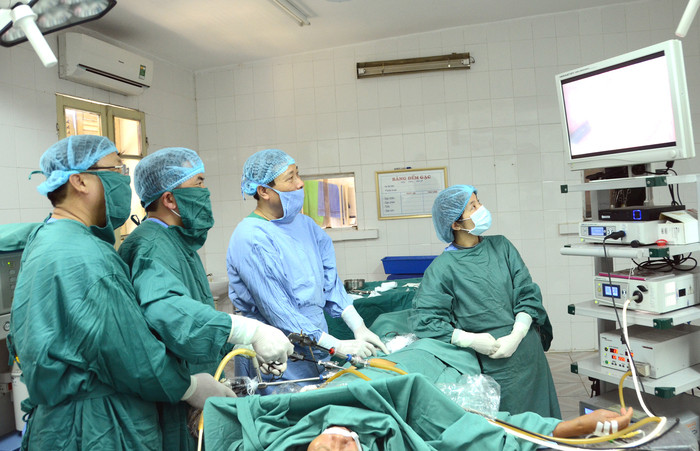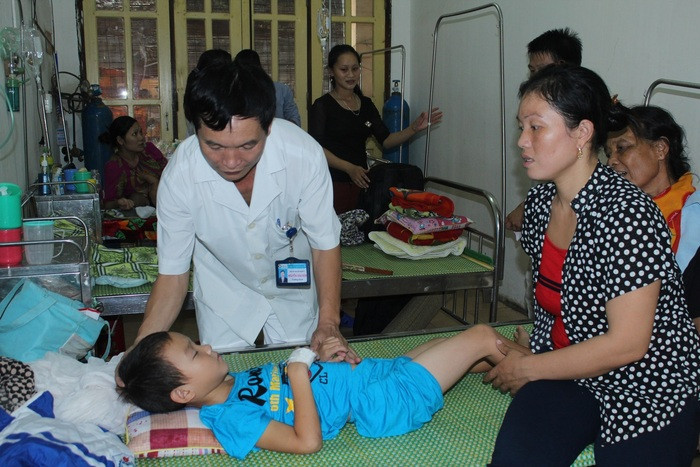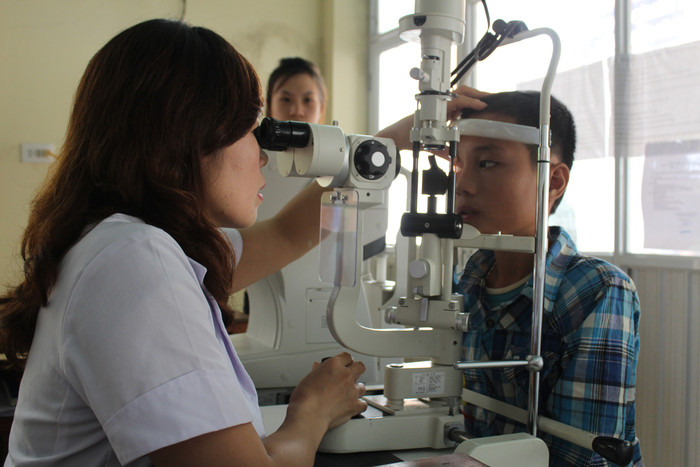Don't calculate profits and losses with the Health Insurance Fund
(Baonghean) - Recently, Vietnam Social Security announced that Nghe An will have to balance the revenue and expenditure of the health insurance fund. Is this in line with the principles and purposes of a social security policy?
Situation of Vietnam and Nghe An Health Insurance Fund
At the regular information conference on social insurance and health insurance policies organized by Vietnam Social Insurance on the afternoon of October 26, 2016, in Hanoi, Deputy Minister and General Director of Vietnam Social Insurance Nguyen Thi Minh said that since 2010, the health insurance fund has saved thousands of billions of VND each year.
As of 2014, the Health Insurance Fund had a surplus of about 5,200 billion VND. Deputy Minister and General Director Nguyen Thi Minh also added that the Health Insurance Fund reserves are sufficient to ensure the response to the adjustment of medical service prices this time and is capable of balancing until the end of 2017. Therefore, from now until the end of 2017, there is no issue of adjusting the Health Insurance premium.
 |
| Endoscopic surgery at Thanh Chuong District General Hospital. Photo: PV |
However, recently, Mr. Nguyen Minh Thao - Deputy General Director of Vietnam Social Security said that in 2017, the Health Insurance Fund had to spend about 77,000 billion VND for health insurance examination and treatment for people, a shortage of about 8,000 billion VND, so the spending plan had to be assigned to the provinces. On that basis, the provinces assigned the plan to the hospitals.
If there is a lack of funds due to objective reasons, the province will arrange the budget. If the province does not have the budget, it will report to the Prime Minister and Vietnam Social Security will consider using the reserve fund to compensate.
Vietnam Social Security forecasts that in 2017, most localities will have a deficit in the health insurance fund. Of which, the three localities of Da Nang, Nghe An, Thanh Hoa are expected to have a deficit of over VND1,000 billion each; Hai Duong, Quang Nam, Quang Ninh each have a deficit of over VND500 billion; An Giang, Thai Binh each have a deficit of over VND400 billion.
Previously, on May 19, 2017, Vietnam Social Security issued Official Dispatch No. 1895/BHXH-CSYT to the People's Committee of Nghe An province with the following content: "Vietnam Social Security will allocate health insurance examination and treatment costs to each locality according to the province's health insurance revenue used in the year so that the locality can proactively allocate and regulate its use."
| As of May 31, 2017, the number of people participating in health insurance in Nghe An was 2,559,175 people, reaching a coverage rate of 82.4% of the province's population, exceeding the target assigned by the Prime Minister (81%), but only about 300,000 people had to pay at the highest level (4.5% of monthly salary), the rest were subjects paying low fees, policy subjects (poor people, meritorious people, children under 6 years old...). |
With the Health Insurance Law No. 46/2014/QH13, the rights of health insurance card holders are increased, patients have access to high-tech medical services, and the quality of medical examination and treatment is improved. In Nghe An, the frequency of medical examination and treatment for health insurance card holders in 2016 was 1.1 times/year, an increase of 38% compared to 2015.
Total payment costs under the health insurance regime were 2,513 billion VND, an increase of 67% compared to 2015 (an increase of 1,008 billion VND). In the first 5 months of 2017, the number of medical examinations and treatments at medical examination and treatment facilities increased by 20% compared to the same period in 2016 (an increase of 306,975 visits), total payment costs under the health insurance regime were 1,281 billion VND, an increase of 46% compared to 2016 (an increase of 401 billion VND).
In previous years, Nghe An had a surplus in the Health Insurance Fund and the surplus was paid to Vietnam Social Security. According to preliminary statistics, in 2010, Nghe An Health Insurance Fund had a surplus of over 58 billion VND; in 2011, a surplus of over 43 billion VND; in 2012, a surplus of over 38 billion VND; in 2014, a surplus of over 81 billion VND (total surplus for 4 years was over 220 billion VND).
Up to now, when there is a change in policy, Nghe An with the characteristics of health insurance participants as mentioned above, has to balance the revenue and expenditure of the fund, will the benefits of health insurance participants in Nghe An be guaranteed?
 |
| Doctor examines patient at Nghe An Obstetrics and Pediatrics Hospital. Photo: PV |
Need to review the role and activities of the social insurance industry
At a recent meeting between medical examination and treatment facilities, leaders of the Department of Health, Provincial Social Insurance, and representatives of a number of medical examination and treatment facilities expressed their opinions: What is the surplus health insurance fund from previous years used for?
Why do the health examination and treatment costs of the people in the province exceed the provincial fund revenue? The Social Insurance does not use the reserve fund (with local contributions from the surplus fund of previous years) to balance it but instead pushes the responsibility to the province? Then the province must report to the Prime Minister for the Social Insurance to consider using the reserve fund?
Here, has the Social Insurance fulfilled its responsibility?
With the view of building and contributing together to control and use the health insurance fund reasonably, many doctors and leaders of medical facilities have made suggestions and plans to manage the health insurance fund reasonably, such as: Applying digitalization and technology to store and connect patient records; Connecting clinical examination results; Building basic medical service packages for units to be proactive in the examination and treatment process; Building service packages for insurance participants to pay together; Building open treatment regimens, limiting abuse of doctors' prescriptions; Building an interactive table of drugs; Having an independent health insurance appraisal agency... |
Opinions from medical facilities also said that the social insurance sector should not view the phenomenon of health insurance fund deficit too negatively, because that was a result that was predicted before the policy of inter-line payment was applied.
Furthermore, health insurance is an important social security policy of the Party and the State, so we should focus on operational efficiency, service quality and benefits that people enjoy, not on profits and losses.
 |
| Examining a patient at the Eye Department, Thanh Chuong District General Hospital. Photo: PV |
In fact, abroad, many countries also have the phenomenon of spending more than the revenue of the health insurance fund. To ensure the rights of participants, to properly implement the principles, purposes and humane and humanitarian meaning of a social security policy, the health insurance fund needs to be shared among regions and subjects, and should not impose the revenue-expenditure problem on localities or medical facilities.
In the context of limited state budget, to reduce the burden of spending on funds and social security policies, including the health insurance fund, we can think of macro-level solutions such as promoting propaganda, raising awareness of environmental hygiene, food safety and hygiene, and having a healthy lifestyle to improve the living environment and health. In other words, prevention is better than cure. Or, consider the option of partially socializing health insurance services.
PV Group
